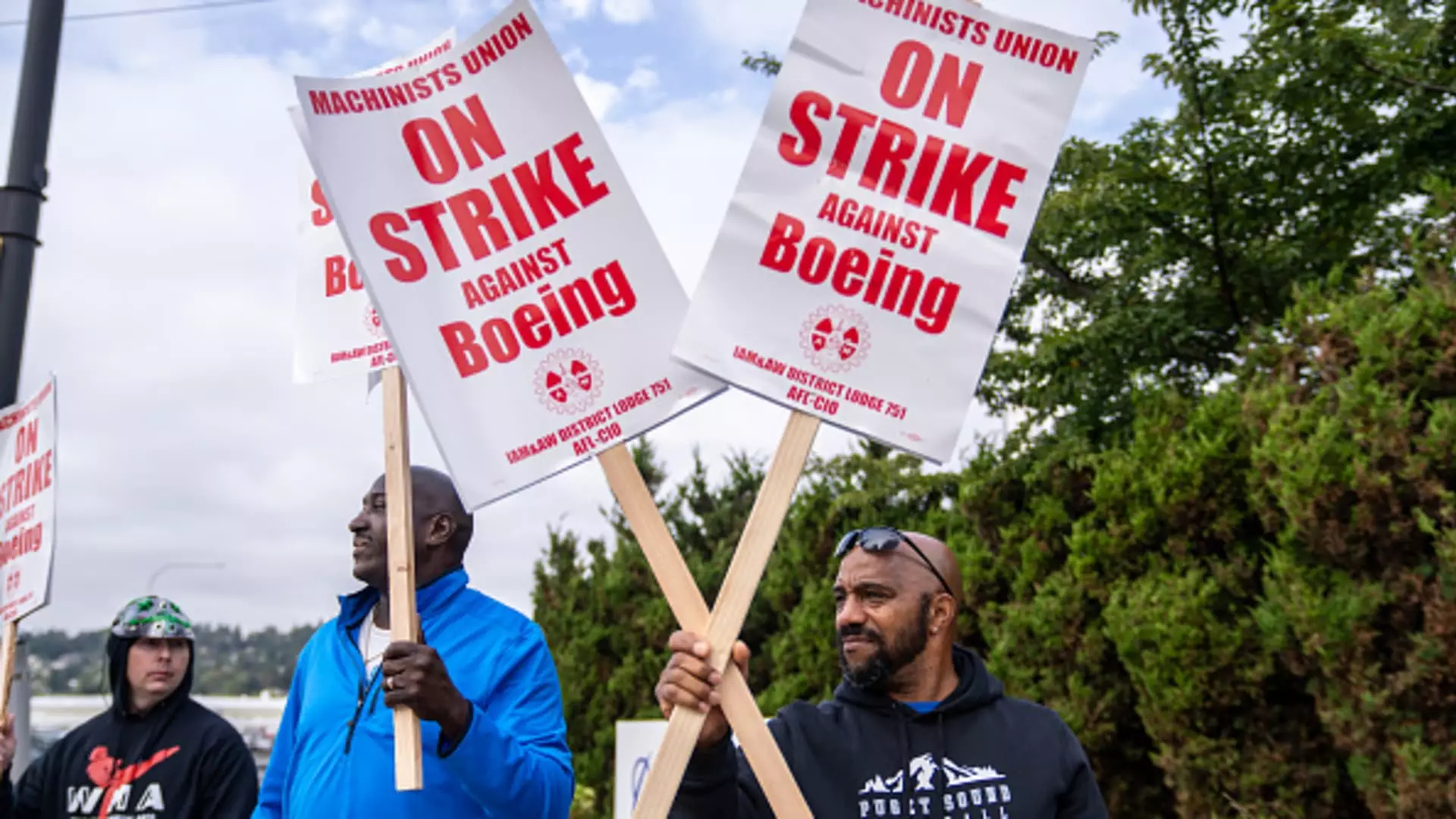In a significant turn of events, Boeing is grappling with one of the largest strikes in its recent history, which began just over a month ago when over 30,000 machinists walked off the job after rejecting a proposed contract. This labor dispute has illuminated the increasing tensions between workers and management in an industry marked by challenges, setting the stage for an ongoing crisis that affects not only Boeing but also its vast network of suppliers and stakeholders.
The ramifications of the strike extend well beyond the immediate workforce. Boeing’s new CEO, Kelly Ortberg, who took the helm earlier in the year, is under immense pressure to stabilize the company amidst mounting financial difficulties. The strike has been estimated by S&P Global Ratings to incur losses exceeding $1 billion monthly. This staggering figure encapsulates the impact of halted airplane production, particularly in the Seattle area where the company has concentrated many of its operations. The strike is not just a symptom of dissatisfaction but represents an existential challenge for an organization grappling with the aftershocks of previous crises, including the dual 737 Max crashes that have led to continued scrutiny on its safety and operational processes.
As negotiations between the International Association of Machinists and Aerospace Workers (IAM) and Boeing have stalled, the prospect of long-term labor unrest raises important questions about the future of the company and its labor relations policies. The initial optimism expressed by Boeing officials about securing a deal quickly dissipated when the proposed contract was overwhelmingly rejected by employees. This critical misalignment between management’s expectations and workforce sentiments points to deeper issues of trust and communication within the organization.
The ongoing strike underscores a transformational moment for labor relations at Boeing. The union’s demands, particularly regarding the restoration of a pension plan — a staple of worker benefits that has been significantly altered in recent years — highlight the tensions that arise when employees feel their needs are marginalized. Academic insights, such as those from Professor Harry Katz at Cornell University, underscore the inevitability of Boeing needing to enhance its offer to the workers if it hopes to reach a resolution.
However, the prospect of prolonged strikes poses its own set of challenges. The breakdown of federally mediated talks earlier in the week illustrates the deepening crisis, not only in labor relations but also in Boeing’s operational capabilities. The company’s decision to file an unfair labor practice charge raises questions about the future dynamic between management and labor and may set the tone for more confrontational negotiations.
The economic implications of the strike are stark. With the loss of paychecks and health benefits affecting striking workers, the economic strain on families is palpable. Although during previous strikes, workers had fewer alternatives, the landscape has changed somewhat, with a variety of new job opportunities emerging in the Seattle region — from food delivery to warehouse work. Nonetheless, this is merely a stopgap for many employees whose primary source of income has been abruptly severed.
Compounded by these struggles, Boeing announced a global workforce reduction of approximately 10%, intending to focus resources more efficiently in the wake of significant financial losses. Preliminary financial forecasts indicate potential losses nearing $10 per share for the third quarter, drawing attention to a company that has not seen profit since 2018. As Ortberg prepares for his first earnings call, he faces significant scrutiny from investors, especially in light of the continued slide in Boeing’s stock value.
Boeing’s troubles could resonate deeply within the aerospace supply chain. The ongoing strike and ensuing layoffs may threaten the stability of companies relying on Boeing’s operations. Even tier suppliers like Spirit AeroSystems are contemplating furloughs in response to Boeing’s cost-cutting measures, an indication that the turbulence experienced by Boeing could ripple outward.
Analysts have warned that Boeing faces a cycle of “doom loop,” where quality concerns, labor relations, and operational challenges feed into one another, perpetuating inefficiencies and instability. The prospect of cash infusions or equity raises looms large for Boeing, leaving its future hanging in the balance as it attempts to navigate this crisis while maintaining its position as a pillar of the aerospace industry.
The ongoing strike at Boeing has highlighted systemic issues in the labor-management relationship, economic pressures stemming from years of mismanagement, and the potential for broader consequences across the aerospace supply chain. As the situation evolves, it remains crucial for both management and labor to find a pathway to cooperation that could mend a fracture that threatens the very fabric of Boeing and the larger industry.


Leave a Reply